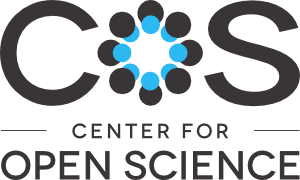Location
Our mission is to increase openness, integrity, and reproducibility of research.
These are core values of scholarship and practicing them is presumed to increase the efficiency of acquiring knowledge.
For COS to achieve our mission, we must drive change in the culture and incentives that drive researchers’ behavior, the infrastructure that supports their research, and the business models that dominate scholarly communication.
This culture change requires simultaneous movement by funders, institutions, researchers, and service providers across national and disciplinary boundaries. Despite this, the vision is achievable because openness, integrity, and reproducibility are shared values, the technological capacity is available, and alternative sustainable business models exist.
COS's philosophy and motivation is summarized in its strategic plan and in scholarly articles outlining a vision of scientific utopia for research communication and research practices.
Because of our generous funders and outstanding partners, we are able to produce entirely free and open-source products and services. Use the header above to explore the team, services, and communities that make COS possible and productive.
Members:
Resources
Displaying 71 - 75 of 447Forest Land Use Dynamics in Indonesia
Alternative land use remains a controversial issue in Indonesia, particularly with regard to regions outside Java. This paper aims to highlight forest land use dynamics in Indonesia, and particularly the difficulties of resolving the conflicts between conservation, the need to preserve local livelihoods, the demands of the logging industry, both legal and illegal, and the pressures to convert land from forest use to other uses, mainly agriculture, plantations and mining.
Estimating the Willingness to Pay for Tenure Security in Brazilian Favelas
This paper examines willingness to pay for housing tenure security in favelas in six Brazilian states, Ceara, Paraiba, Pernambuco and in the north-east, Minas Gerais and Sao Paulo in the south-east, and Rio Grande do Sul in the south, using data from the national household survey (Pesquisa Nacional por Amostra de Domicilios, PNAD) for 2002.
Land Suitability Assessment for Camelina (Camelina sativa L.) Development in Chile
Camelina (Camelina sativa L.) is an oilseed with potential for use as a raw material in second-generation biofuels. Camelina has a seed yield of up to 2380 kg ha-1 and contains around 45% fatty acids. Selection of a suitable site is critical for production optimization. The objective of this study was to determine Chilean agro-climatic suitability for establishing camelina as a productive alternative.
Mechanical land clearing to promote establishment of coastal sandplain grassland and shrubland communities
Author Posting. © The Author(s), 2005. This is the author's version of the work. It is posted here by permission of Blackwell Publishing for personal use, not for redistribution. The definitive version was published in Restoration Ecology 14 (2006): 220-232, doi:10.1111/j.1526-100X.2006.00124.x. The decline in grasslands and other species-rich early-successional habitats on the coastal sandplains of the northeastern U.S. has spurred management to increase the area of these declining plant communities.
State and local governments plan for development of most land vulnerable to rising sea level along the US Atlantic coast
Author Posting. © The Author(s), 2009. This is the author's version of the work. It is posted here by permission of IOP Publishing for personal use, not for redistribution. The definitive version was published in Environmental Research Letters 4 (2009): 044008, doi:10.1088/1748-9326/4/4/044008. Rising sea level threatens existing coastal wetlands. Overall ecosystems could often survive by migrating inland, if adjacent lands remained vacant.


